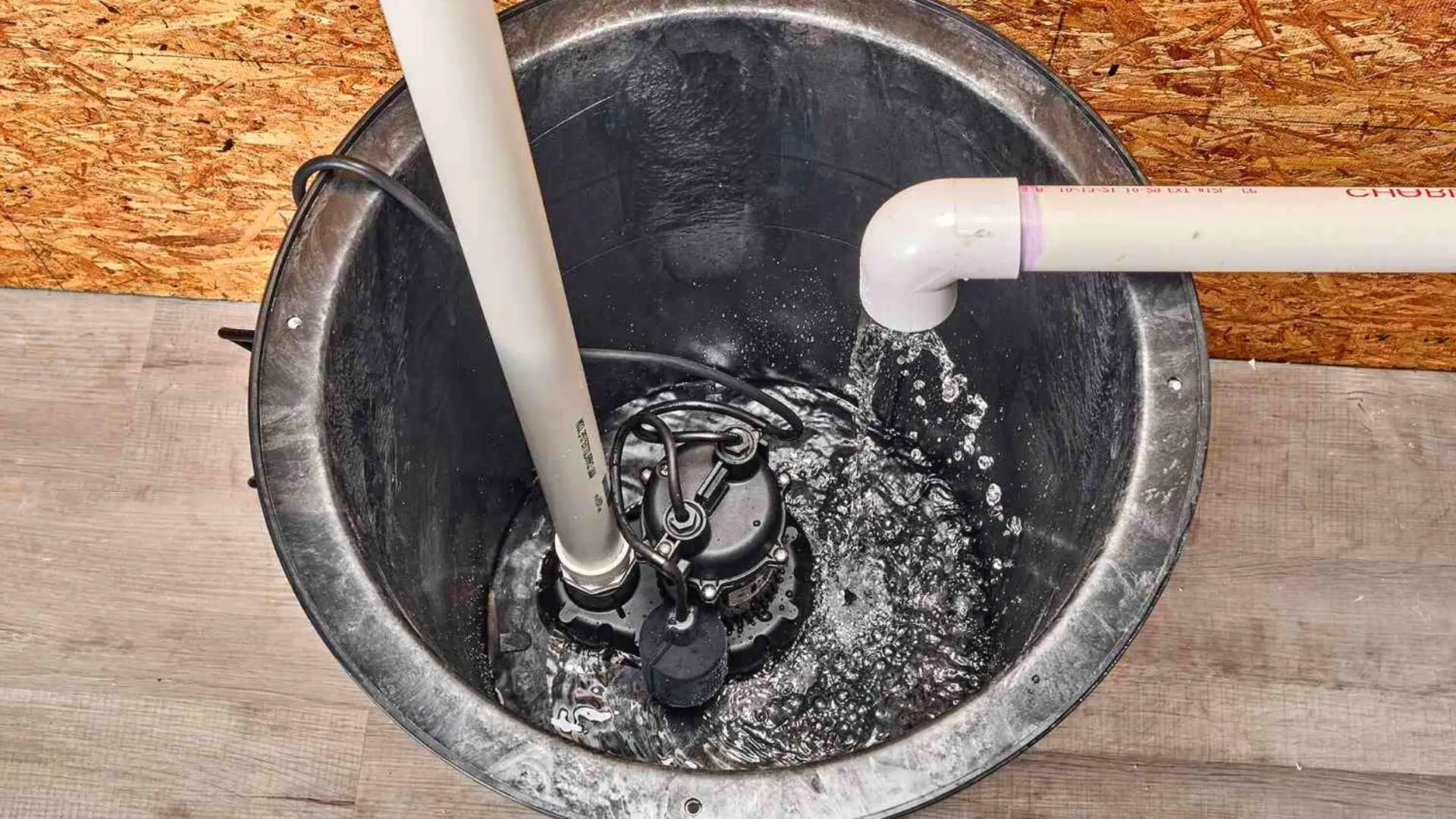The Comprehensive Guide to Maintaining a Sump Pump
The Comprehensive Guide to Maintaining a Sump Pump
Blog Article
We have encountered the article relating to Cleaning & Maintenance Tips for Your Home's Sump Pump below on the web and decided it made good sense to relate it with you over here.

Sump pumps are critical elements in several homes, particularly in areas prone to flooding or too much wetness. They help avoid water damage by effectively eliminating excess water from basements or crawl spaces. Nevertheless, like any other device, sump pumps need regular maintenance to ensure they work efficiently when required one of the most. Cleansing your sump pump is a vital part of its maintenance, and comprehending how to do it effectively can conserve you from expensive fixings and possible calamities.
Introduction
Maintaining a clean sump pump is essential for its appropriate performance and long life. Overlooking this vital job can bring about blockages, malfunctions, and ultimately, water damages to your home. For that reason, finding out how to clean a sump pump is vital for home owners who depend on these tools to keep their basements dry and secured.
Signs of a Dirty Sump Pump
Understanding when your sump pump needs cleansing is critical for protecting against possible malfunctions. Some typical signs that show a filthy sump pump include weird sounds during procedure, minimized water flow, and noticeable debris in the pit. If you observe any one of these signs, it's essential to cleanse your sump pump promptly to avoid any more issues.
Preparing for Cleansing
Before you start cleansing your sump pump, it's vital to take some safety and security preventative measures. Beginning by shutting off the power to the pump to avoid any kind of electric mishaps. In addition, wear suitable protective equipment, such as gloves and safety glasses, to shield on your own from dirt, particles, and prospective microorganisms.
Understanding the Sump Pump
Prior to diving into the cleansing process, it's important to have a fundamental understanding of just how a sump pump functions. Typically set up in a pit or basin below the cellar floor, a sump pump includes several vital elements, including a pump, a float switch, and a discharge pipeline. When water collects in the pit, the float button triggers the pump, which then pumps the water out via the discharge pipe, far from the building's structure.
Step-by-step Guide to Cleansing a Sump Pump
Shutting Off the Power
Begin by disconnecting the power supply to the sump pump to prevent any kind of accidents while cleansing.
Looking For Proper Functioning
Prior to re-installing the pump, execute a fast examination to ensure that the float switch activates the pump properly. Pour some water right into the sump pit and observe the pump's operation. If everything is operating correctly, you can reconstruct the pump and reconnect the power supply.
Removing Particles and Dirt
Use a bucket or an inside story to get rid of any noticeable particles, dirt, or sediment from the sump pit. Dispose of the debris correctly to prevent it from blocking the pump or the discharge pipeline.
Cleaning the Pump and Float Change
As soon as the pit is free from debris, very carefully remove the pump from the pit. Examine the pump and the float switch for any kind of signs of damages or wear. Utilize a soft brush or cloth to cleanse the surface areas and get rid of any kind of accumulated gunk.
Purging the System
After cleaning the pump and float switch, flush the sump pit with clean water to eliminate any kind of remaining dirt or sediment. This will help guarantee that the pump runs smoothly and effectively.
Maintenance Tips to Maintain Your Sump Pump Clean
Along with routine cleansing, there are several maintenance suggestions you can comply with to maintain your sump pump in optimal problem:
Conclusion
Cleansing your sump pump is a vital element of its maintenance and makes sure that it operates efficiently when you need it one of the most. By complying with the steps detailed in this overview and incorporating regular upkeep into your regimen, you can extend the life-span of your sump pump and secure your home from water damage.
6 STEPS ON HOW TO CLEAN A SUMP PUMP PROPERLY
UNDERSTANDING SUMP PUMPS
Your sump pump plays a crucial role in protecting your home by managing and removing excess water. It primarily functions as a “shield”, guarding your basement against the damaging effects of water accumulation. The pump is housed in a sump pit in the lowest part of your basement, and its job is to pump out any water that collects there.
During heavy rainfalls or when snow melts rapidly, water can infiltrate your basement, posing potential risks like flooding, structural damage, and harmful mold growth. Here, the sump pump springs into action, pumping out the intruding water and directing it away from your home.
SAFETY FIRST
Before cleaning, remember to prioritize safety. Disconnect the sump pump from the power source to prevent any accidental electric shocks. Also, wear sturdy gloves to protect your hands from any sharp or dirty components within the pump.
REMOVE THE SUMP PUMP
After ensuring your safety, the next step is to remove the sump pump from its pit. Doing this might require careful maneuvering as you don’t want to damage any pump components. Once removed, clean the sump pit to remove any accumulated debris or sludge.
INSPECT THE PUMP
Inspect the pump for any visible signs of wear or damage. Check the power cord, float switch, and impeller housing. If any components look worn out or damaged, consider replacing them to ensure optimal performance.
CLEAN THE PUMP
Thoroughly clean the pump with warm, soapy water. Make sure to rid it of any dirt, gravel, or other debris that might impede its performance. You can use a toothbrush to clean the small, hard-to-reach parts of the pump.
REINSTALL THE SUMP PUMP
Reinstall the pump into the sump pit Make sure it’s positioned correctly to remove the water effectively Once it’s back in place, reconnect it to the power source TEST THE PUMP
Finally, pour some water into the pit to ensure the pump works correctly. It should start automatically and begin pumping out the water; if it doesn’t, check the power source and the positioning of the pump.
Remember, while cleaning your sump pump is an essential part of home maintenance, hiring a professional plumber for a thorough inspection and cleaning at least once a year is also important. This will ensure that your pump is in optimal condition, ready to protect your home from potential water damage.
BEST PRACTICES FOR CLEANING SUMP PUMP DISCHARGE PIPES
Regular Inspection: Regularly inspect your discharge pipes, especially during heavy rainfall or snowmelt periods. Look for any signs of blockage or damage. Early detection of problems can prevent serious issues down the line. Periodic Cleaning: Over time, sediment and debris can accumulate in the discharge pipes, impeding the flow of water. Regular cleaning helps keep the pipes clear and functioning efficiently. You can use a high-pressure water jet to effectively clean the pipes. Insulation During Winter: In colder climates, discharge pipes can freeze, blocking the outflow of water. Protect your discharge pipes from freezing temperatures by insulating them with foam pipe insulation. This will ensure the sump pump can continue to discharge water even in freezing conditions. Proper Positioning: The discharge pipe should be positioned to direct water away from your home’s foundation. Improper positioning can lead to water seeping back into the basement. Ensure the pipe is long enough and angled correctly. Installation of a Check Valve: A check valve prevents water from flowing back into your sump pit after the pump has pushed it out. Installing a check valve helps maintain the efficiency of your sump pump and reduces the risk of flooding. Minimize Pipe Turns: Every curve or turn in the discharge pipe can decrease the efficiency of water flow. By minimizing turns and bends in your discharge pipe, you can increase the efficiency of your sump pump. https://www.fullspeedplumbing.com/how-to-clean-a-sump-pump-properly9999/

As an avid person who reads on How to Care for Your Sump Pump, I figured sharing that editorial was valuable. I beg you set aside a second to share this blog posting if you appreciated it. I enjoy your readership.
Click Here Report this page